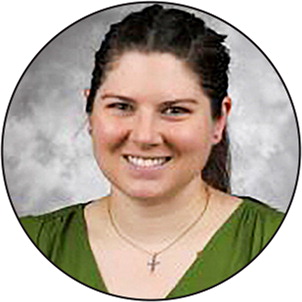
Am Fam Physician. 2024;109(4):371
Author disclosure: No relevant financial relationships.

8:45 a.m.
The morning starts with our team huddle. We review the scheduled patients to verify care gaps. Our financial staff call patients to verify their insurance status or update their sliding fee status if they are uninsured.
9:00 a.m.
My first patient is a 57-year-old woman with uncontrolled diabetes mellitus. Her point-of-care A1C is greater than 14, and I start her on insulin in addition to her oral diabetic medications. I will follow up with her every two weeks.
9:30 a.m.
My next patient is new. He is 28 years old and was recently diagnosed with HIV and type 1 diabetes in the ER. I refer him to our care coordinator for help obtaining a pump and continuous glucose monitor. His HIV diagnosis was a surprise. We discuss highly active antiretroviral therapy and how compliance is important to prevent complications.
9:45 a.m.
A patient is scheduled for follow-up after a cholecystectomy, but he did not have the surgery because he could not afford the co-pay. We discuss the risks associated with an emergency surgery. For now, he will watch his diet and pray that he does not have any complications until he can afford to go back to the surgeon.
10:52 a.m.
I am glad to see my 63-year-old patient with multiple sclerosis looking radiant and happy today. She was advised by her neurologist to discuss the new pain in the left TMJ area. The pain is worse with mastication and interferes with opening her mouth. The examination shows TMJ clicking. I refer her to an oral maxillofacial surgery specialist.
11:15 a.m.
The morning ends a bit early, and I review emails, laboratory results, and reports from the hospital and specialists and refill patient medications. Bringing my patients hope, celebrating their successes, and witnessing their strength are the driving forces behind my purpose as a family physician.

7:30 a.m.
As a family medicine–trained palliative care physician, I see a broad range of patients from surrounding rural communities. I practice full-spectrum palliative care. My day starts with our hospital's Left Ventricular Assist Device (LVAD)/Advanced Heart Therapies Committee to discuss patients undergoing an evaluation for an LVAD or heart transplant. Knowing someone must die for one of our patients to get a heart sheds light on the ethical weight of these decisions.
8:40 a.m.
At the palliative medicine clinic, my end-of-year fellow presents her plans to support the patients in complex medical decision-making and manage their advanced symptoms. Because her skills are well refined, I do not have much to add and, instead, “bless her work.” I reflect on how satisfying it has been to be a part of her mentoring and growth.
1:30 p.m.
I evaluate an 11-year-old girl with cerebral palsy at the local children's hospital after a recent musculoskeletal surgery. She has had severe oral aversions to medications. I encouraged her family to try oral morphine, and we were overjoyed that she tolerated it!
2:20 p.m.
At a home visit, I follow up with a man who has terminal glioblastoma. I had prescribed medical cannabis for pain and nausea because he wanted to avoid opioids. His symptoms are well controlled, and as we reminisce on his life, he is surrounded by the love of his family. I provide education on the benefits of an out-of-hospital DNR and hospice, which the family appreciates. We pray for a miracle together.
4:00 p.m.
While driving back to my office to put in orders, I reflect on what a privilege it is to walk the journey of serious illness with patients and their families. Family medicine gives me an incredible foundation for this model of care, specifically feeling prepared to care for patients in a variety of care settings. “Just Another Day in Paradise” by Phil Vassar plays on my radio as I drive through the corn fields.
